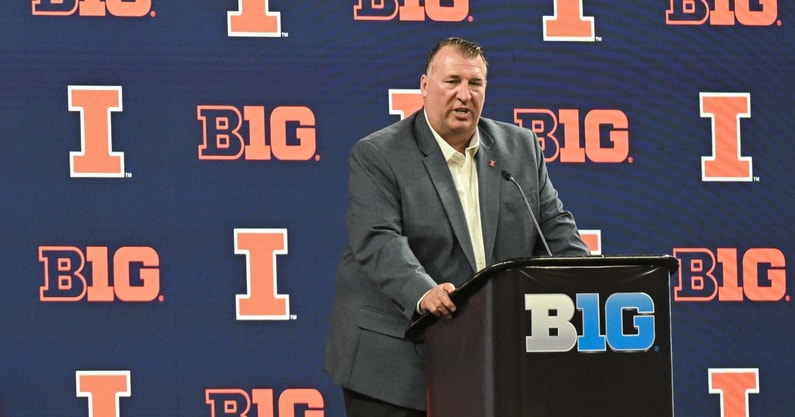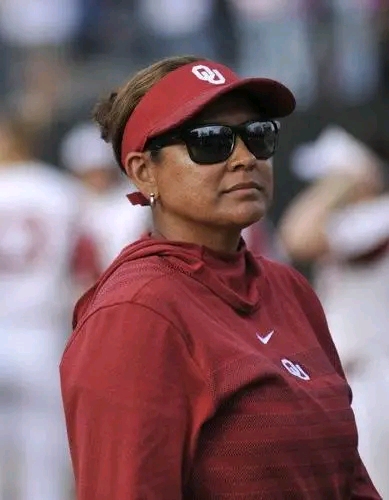
Bret Bielema, a seasoned college football coach with experience in both the Big Ten and SEC conferences, recently shared his perspective on what sets these two powerhouse leagues apart. Having navigated the challenges and nuances of coaching in both environments, Bielema offered valuable insights into the distinct styles, cultures, and competitive landscapes that define each conference.
Bielema’s coaching career includes notable stints at the University of Wisconsin in the Big Ten and at the University of Arkansas in the SEC, giving him firsthand experience with the demands and expectations of both leagues. His unique vantage point allows him to contrast the two conferences beyond just on-field play, delving into recruiting, fan engagement, and program management.
One of the primary differences Bielema highlighted is the style of football commonly played in each conference. The SEC is often recognized for its fast-paced, high-powered offenses and intense physicality. Many SEC teams emphasize speed and athleticism, often running dynamic spread offenses that put a premium on explosive plays. The conference’s competitive depth and athleticism create an environment where every game feels like a battle for supremacy, and the margin for error is slim.
In contrast, the Big Ten traditionally leans more toward power football, with a focus on strong defensive schemes and methodical offensive play-calling. Bielema noted that the Big Ten’s style often emphasizes physical toughness and disciplined execution, with teams relying heavily on a solid running game and stout defense. While the conference has evolved to incorporate more spread concepts and faster tempo offenses in recent years, the foundational style remains grounded in physicality and strategic control.
Recruiting is another area where Bielema sees clear distinctions. The SEC’s recruiting footprint is vast and competitive, often securing many of the nation’s top prospects year after year. The conference’s reputation for producing NFL talent and its intense fanbases make it a magnet for elite high school players. Coaches in the SEC face relentless pressure to compete for top-tier recruits and must excel in relationship-building and player development to stay ahead.
The Big Ten, while also highly competitive in recruiting, tends to draw more heavily from the Midwest and northeastern regions. Bielema pointed out that Big Ten programs often benefit from strong local recruiting ties and established pipelines but may not always attract the same volume of five-star recruits as some SEC schools. Instead, Big Ten teams often find success by developing players over time and focusing on team cohesion and fundamentals.
Fan culture and game-day atmospheres also differ significantly between the conferences. Bielema praised the passion and intensity of SEC fanbases, describing them as some of the most fervent and loyal in college sports. The tailgating traditions, stadium environments, and regional pride create electric atmospheres that elevate the importance of each matchup.
Big Ten fans are equally passionate, with many schools boasting historic traditions and deep-rooted rivalries. Bielema noted that the conference’s Midwestern fanbases bring a distinct kind of loyalty and pride, often tied to the universities’ identities and the cultural fabric of their regions. The Big Ten’s stadiums regularly pack tens of thousands of fans, creating an imposing environment for visiting teams.
Beyond football itself, Bielema discussed the operational and administrative differences between coaching in the two conferences. The SEC often places intense pressure on coaches to win immediately, with fan expectations and media scrutiny reaching fever pitch. The conference’s competitive balance means that coaches must constantly innovate and adapt to maintain success.
The Big Ten, while equally demanding, sometimes offers a slightly different pace and approach, with an emphasis on academic standards and institutional support. Bielema highlighted the importance of navigating these administrative factors while building a successful program in both settings.
Ultimately, Bielema’s experience in both the SEC and Big Ten has enriched his understanding of college football’s diverse landscape. He emphasized that success in either conference requires adaptability, strong leadership, and a deep commitment to player development. While the styles and cultures differ, the passion for the game and the pursuit of excellence remain constant.
His reflections provide a valuable perspective for coaches, players, and fans seeking to understand the unique qualities that make each conference special. As college football continues to evolve, the interplay between conferences like the SEC and Big Ten will remain a defining storyline in the sport’s rich history.




